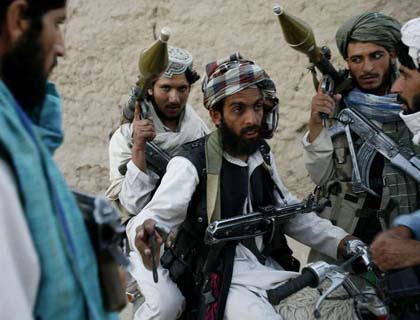The revival of the Afghan Taliban as a powerful insurgent force that was apparently routed in 2001 should not come as a surprise. In fact, the radical group was never really defeated. Their fighters melted away into the population or took sanctuary across the border in Pakistan among their Pakhtun brethren. Most of the leadership had survived the offensive and also moved to Pakistan,” these words were written by a Pakistani author and journalist.
The US-led counter-terrorism strategy launched in the aftermath of 9/11 failed to stop militancy in Afghanistan. Although, the Taliban militants were decentralized and their regime was dismantled in the beginning, however the triumph was short-lived. Three years later, the US found itself involved in its second Afghan war with thousands of coalition forces engaged in fierce battle with revitalized and regrouped Islamic insurgents. The ragtag militants, who seemed to disappear forever, were aided to come under a single banner so as to fight against Afghan-American soldiers.
In other words, the Taliban guerillas were engaged in second war with new ideology namely “jihad” and prompted the teens to deem it imperative upon themselves to join them. Since the radical ideologues considered the foreign troops as the sworn enemy of their ideology, they remained as a formidable opponent and ready to sacrifice their lives.
However, political interests were the ulterior motive for the real players. I believe that the Taliban are categorized into two main groups: the ideologues and the mercenaries. The mercenaries are those who were marginalized from the society and bereft of the economic boost. They stoop so low to take the life of others so as to save their own. Humanity and ethical codes are utterly meaningless in their lives. To put it succinctly, what matter for them are not moral values but money and properties and they are a vehicle for the real players, who are planning behind the veil. Therefore, they kill people indiscriminately, including women and children.
The same categorization is applicable to Daesh. To satiate their sinister desires, they announced “jihad-e nikah” behind human façade. The fact is that they come out of the poor and cruel families. In another item, besides suffering economic pressures, they failed to receive parental sympathy. Thus, they take a sort of revenge with a deep sense of intolerance. Being brought up in cold atmosphere, the militants never feel sorry to shed the blood of the innocent individuals.
Daesh emerged in Iraq and later spread to Syria with further ambitions to expand across the Middle East. So a curious debate has started with regards to its sudden appearance here in Afghanistan.
Most Afghans who know their history would argue that the idea of a full-fledged radical ideology would never succeed in our country. Even the Taliban who were to some extent “homegrown” never quite managed to rule the entire country with their radical approach.
The real danger, however, is apparent when looking at the broader picture. Afghanistan has always been at the crossroads of Asia. Our country’s strategic geopolitical position makes it a desirable location and sacrificial lamb for any ambitious political power in this region wishing to have a presence here.
Anyhow, despite announcing “spring offensive”, with a rocket attack on a US base outside Kabul last month, the Taliban has given the Afghan government a green light to come on the table of negotiation. Significantly, the Qatar meeting took place amidst the spring offensive by the Taliban, testing the mettle of the Afghan National Army backed by a relatively small residual American force. The government forces have shown greater grit and capacity to confront the ferocity of the Taliban attacks but the high rate of troop desertion and casualties remains a serious concern.
Although the Taliban have made significant advances, even in some northern districts there is still no possibility of the insurgents overrunning major cities leave aside Kabul. Despite all its problems and weaknesses, the Afghan National Army can hold its ground. The presence of residual troops has reinforced its confidence.
Meanwhile, “the Taliban have their own problem of maintaining unity in their ranks. Though Mullah Omar remains the supreme leader, it is not clear if he has the same unchallenged authority he enjoyed a decade ago.”
With the emergence of many new militant groups, especially Daesh, some believe that the influence of the Taliban’s Supreme leader Mullah Omar is waning. As a result, a number of Taliban insurgents have also pledged allegiance to Daesh and have changed their white flag into black one. Currently, a legion of militants is operating under the name of Daesh in Afghanistan. So, Mullah Omar seems to have turned into more of a symbolic figurehead.
No matter whether the militants are operating under the black flag of Daesh or the white flag of Taliban, an effective strategy should be planned to counter terrorism more seriously. The rise in militancy should be responded strongly so that the militants do not cherish the wish for basing in any particular part of the country or show further flexibility in making peace.
In short, Afghanistan must not be permitted to descend back into chaos as it did after the Soviet Union’s withdrawal in the late 1980s - or the crucible of death that Iraq has become in the wake of the US troops’ departure. I hope this time; our soldiers will be the winner and root out the terrorists from the country.

